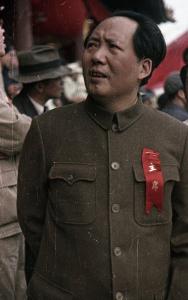Мне непонятно откуда взялась типологическая единица "восточный нордид", которым по непонятной инерции называют всех высокоголовых нордидов? На чём основанны эти строчки SNPA?
"The East-Nordid type is dolichocephalic, leptoprosopic and leptorrhine, and similar in most features and measurements to the Hallstatt type, and there is considerable phenotypical overlap between the two. The main points of morphological departure involve the usually higher vault and forehead, and often more prominent (and sometimes convex) nasal skeleton, of the East-Nordid."
Кроме SNPA кто-нибудь ещё об этом писал?
нашёл откуда это взяли на SNPA, и сам отвечаю на свой вопрос:
Цитата
"The oldest certain Indo-European crania which we know from Central Germany to the southeast originate from the Stone-Copper-Age and the early Bronze Age. These crania are everywhere in this region always more or less longskulled and high-skulled. They are not long-skulled and lowskulled like the crania of the living Scando-Nordids. Extremely long and high were the crania of the late Neolithic East German Corded-Ceramic people. The Corded-Ceramic people are generally regarded as a rather important component of the Indo-European core."
"This proto-Indo-European East-Nordid race has now almost disappeared. This is evidently a consequence of the forceful - one might say "explosive"- expansion of the Indo-European peoples. Some living high-skulled Nordid types in Poland, Russia, Finland, and the East Baltic region can be derived from the proto-Indo-European East-Nordids. Thus, not all of the living high-skulled peoples of this part of Europe can be regarded as mixtures of the Scando-Nordid (or East-Mediterranean) and East-Baltid (or Dinarid) races. In addition, one must naturally keep in mind the slight blond elements still existing at present among the eastern Indo-European peoples. This is especially so in the case of the Kurds in northern Mesopotamia. But blond elements also occur further east - up to Kashmir in northwestern India."
Lundman, Bertil (1977). The races and peoples of Europe.
"A eastern, high-headed sub-circle (eastern europans, EE)
II more progressive eastern europans or caspans"
a) long-heads
2) blonde: east-nordids (not on map) (so extraordinarily similar to west-nordids, except for height of skull, that it could have been been brought there as a sub-race with a different system). Consists otherwise of an Aistin sub-race in western Finland and Estonia and an Arin, distributed in eastern Europe and western Asia, both tall of stature."
Lundman, Bertil (1943). Jordens människoraser och folkstammar. P 132
"I shall now further motivate my distinguishing of an Aisto-Nordic variety at the nearest east of the Baltic sea (which, by the way, can and has been described as a variety of an East-Nordic sub-race by me in Jordens Människoraser (Human Races of the Earth) which, however, do not concern us any closer as of here). It is here most clearly distinguished by that, if you make the exception of (during historic times largely colonized directly from Sweden) Nyland, the long-skulled and tall "nordic" parts are nearly as high-headed and rich in Q as the more "East-Baltic" accentuated ones(compare the maps!). - There is no doubt regarding the sufficiency and reliability of the investigations. We have though an excellent concensus of reasearch of both crania and the living as far as HLI is concerned. Finnish researchers, spearheaded by Karsten, are apparently right about that quite a few, most likely the majority of the living Nordic people east of the Baltic sea did not come from Sweden during the Viking age and later, but that they have been there atleast since early Iron ages. This is also why their eastern european high-headedness and distribution of blood alleles is especially important and significative.It is clear that the remnants of the old, blonde, long and high-headed "arch-indoeuropeans" are found in them, only insignificantly mixed with west-nordic, low-headed elements. This defends an arranging of an Aisto-Nordic sub-race remarkably well: high-skulled, tall of stature and probably not extraordinarily narrow of face."
Lundman, Bertil (1944). Raser och folkstockar i Baltoskandia. P 31
"Not until then came agricultural tribes with relatively greater body height (or at least a predisposition for that). Also here we have a south-western low-skulled group, who later formed the Göta type, and a baltic, more high-skulled group, the ancestors of the Aistins."
Lundman, Bertil (1944). Raser och folkstockar i Baltoskandia. P 33
"The Latvian people includes Aisto-Nordic, East-Baltic and at least since Vendel times even a few directly Swedish elements."
Lundman, Bertil (1944). Raser och folkstockar i Baltoskandia. P 36



 Вход
Вход Зарегистрироваться
Зарегистрироваться






 Наверх
Наверх



